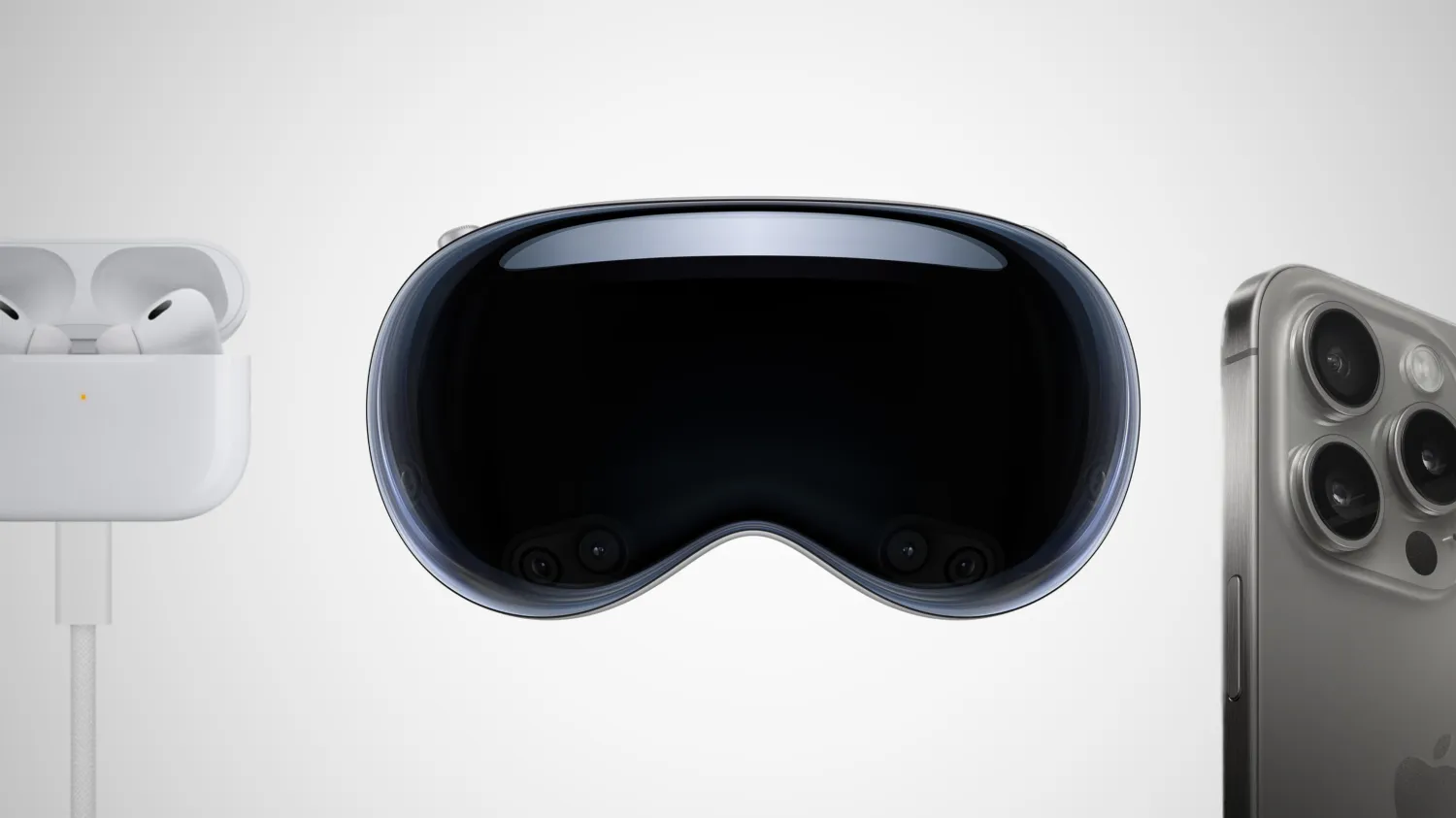 2052
2052
 2023-09-14
2023-09-14

This week, Tim Cook reaffirmed Apple’s previously-announced plans to ship its Vision Pro AR/VR headset “early next year.” ‘”Early” in Apple parlance can mean as late as May, but various signs point to this truly meaning a debut in the first few months of 2024.
But if you are planning to get Apple’s first ever spatial computer, we also learned this week about some important prerequisites. To get the most out of your Apple Vision pro headset, you’ll also need to invest in Apple’s latest-and-greatest iPhone 15 Pro and AirPods Pro earbuds …
AirPods Pro for the best AR sound experience
The Vision Pro headband integrates left and right speaker modules, providing decent integrated sound. However, the sound quality is not as good as dedicated headphones and people nearby will be able to hear the sounds, too. Apple recommends using earbuds while wearing Vision Pro for ultimate immersion and privacy.
Reducing latency is super important to ensure a realistic and immersive AR/VR experience. Unfortunately, only second-generation AirPods Pro have the wireless audio components necessary to be used as Vision Pro earbuds with super low latency. And specifically, you will need the latest iteration of AirPods Pro, AirPods Pro with USB-C case. It turns out that the earbuds themselves are slightly different with different model numbers – it’s not just a new case featuring a different port. So even if you just bought second-generation AirPods Pro and were excited to buy the Vision Pro in 2024, you probably should budget to spend another $249 to get the new revision of AirPods Pro.
As well as ultra-low latency, the new AirPods Pro can also communicate with the H2 chip in Vision Pro to stream high-bit rate lossless audio to the wearer’s ears. The buds are also now rated for IP54 dust resistance.
Despite the exclusive features, Apple has unhelpfully branded the new AirPods as ‘second-generation’ still. It’s confusing. If you want to keep track, the full product name of the new model is AirPods Pro (2nd generation) with MagSafe Charging Case (USB‑C).
iPhone 15 Pro to capture Spatial Video to watch later on Vision Pro
The other purchase you might want to consider as a prospective Vision Pro owner is a new iPhone. One of the biggest selling points of the Vision Pro was the ability to view spatial 3D videos, which Vision Pro can project in a window to make it feel like you are reliving memories as if you are actually there.
The Vision Pro headset itself can capture these Spatial Videos, but it is a pretty ungainly affair. Apple demoed this in June by showing a father videoing his kid’s birthday party, but it was widely mocked as it reflects a rather dystopian state of affairs. Needing to put the headset on means the person is disconnected from the real world in the moment when it matters.
However, Apple announced this week that iPhone 15 Pro and iPhone 15 Pro Max will be able to take Spatial Videos too (coming as part of a software update later this year).
It works by holding the phone in landscape and exploiting the physical separation of the ultra-wide and main camera lens, in the rear camera module, to collate the 3D depth data. People are used to capturing moments using their phone, so this is a much more approachable solution to generating these 3D video files. The moments can then be enjoyed at a later date through the Vision Pro headset.
So, if you want to capture your child’s next birthday in 3D but don’t want to be the weird parent foisting a bulky isolating headset on their face when the birthday cake is cut, you’ll want to pick up the iPhone 15 Pro or Pro Max as well.
It all adds up
In terms of hard numbers, the Vision Pro headset itself will cost at least $3499. Apple has not shared a full price list yet of add-ons and accessories, like different head-strap options or the price of the optional Carl Zeiss corrective lenses.
Add onto that $249 for new AirPods Pro and $1000+ for the new iPhone 15 Pro, and your all-in price is approaching five grand … plus tax.
(Related but tangential sidebar: Unrelated to Vision Pro, We also saw a similar unfortunate phenomenon with the new Ultra-Wideband location features Apple announced for Apple Watch Series 9 and iPhone 15. The Series 9 can now simultaneously ping your phone and help you find it with a mini Precision Finding UI directly on the watch, but this feature only works when you are paired with another iPhone 15 that has the same second-generation Ultra-Wideband chip. If you just upgrade your watch, and not your phone, you can’t use this feature.)
Source: 9to5mac